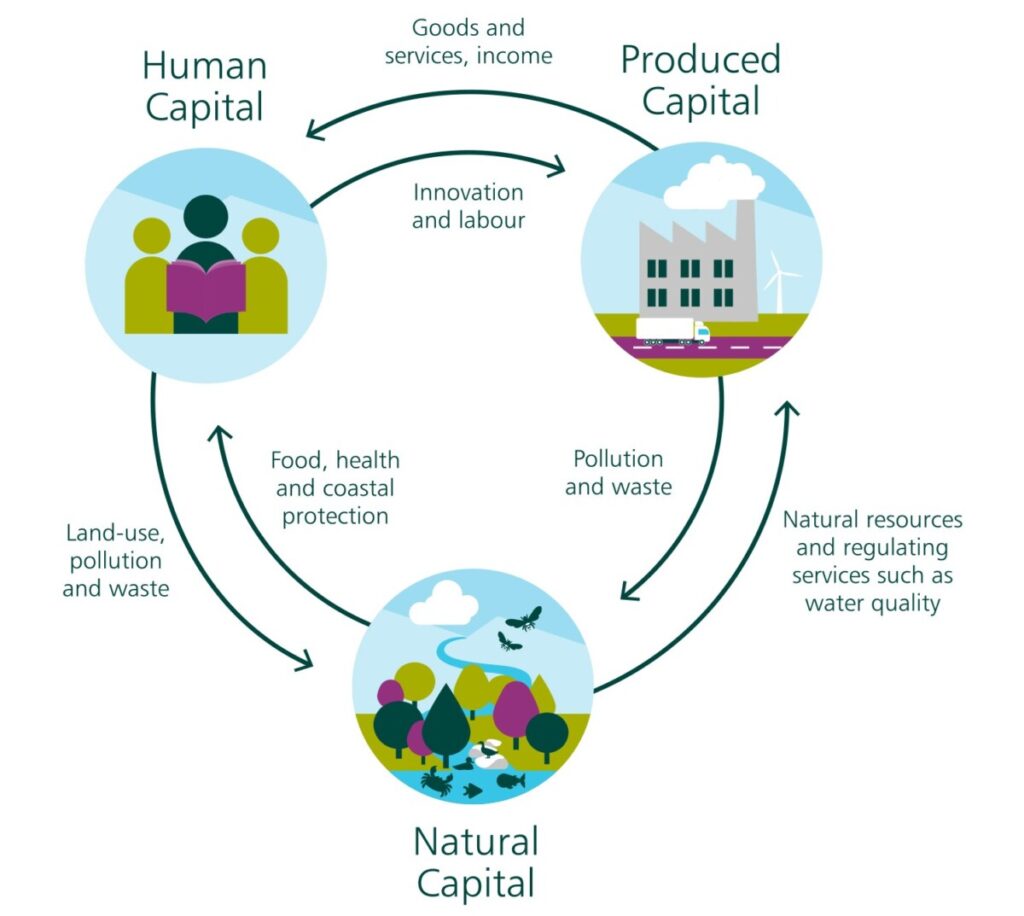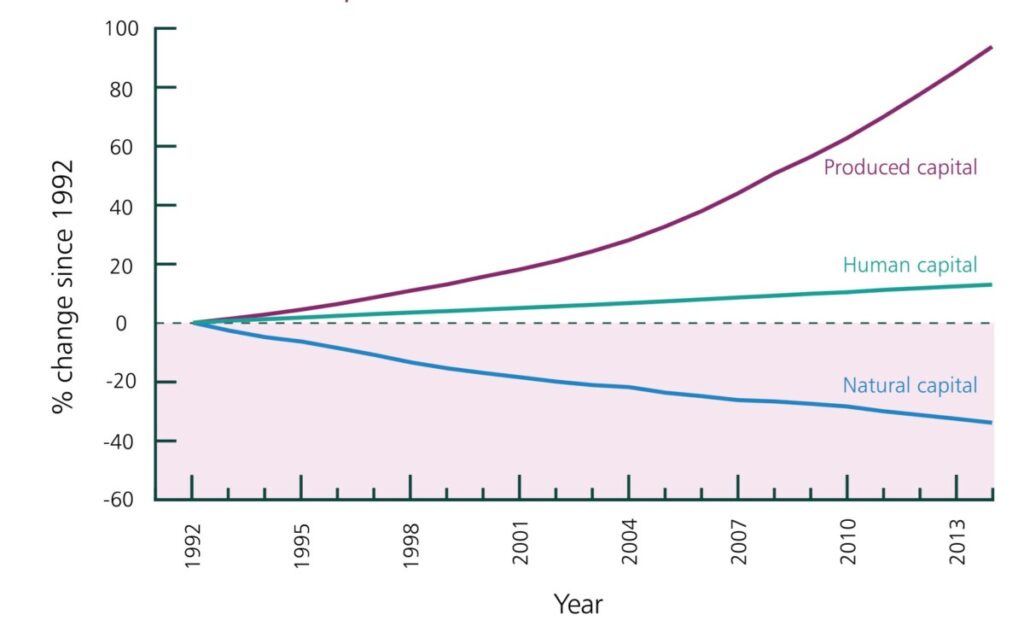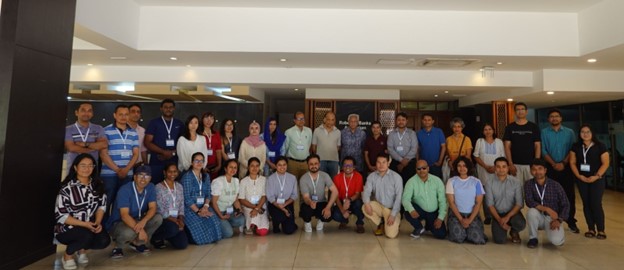Isn’t it time businesses paid for what they use?
Excerpts from Professor Sir Partha Dasgupta’s research on The Economics of Biodiversity (2021) [1], delivered at SANDEE Summer School in Bangkok, Thailand.
We need 1.7 Earths to meet human demands.
The human economy demands 70% more resources than the earth can sustainably provide.
The assumed logic of the economic growth model has a gaping hole: the cost to nature.
The Power and Neglect of Natural Capital
The post-industrialisation development model has seen humanity take huge strides in the creation of physical Produced Capital, for instance in the building of roads or invention of machines; as well as in the growth of Human Capital: increasing health and longevity, skills, and education.
But all the while, our model of development has relied on the alarming destruction of Natural Capital: natural spaces from forests and oceans to coral reefs and the soils, and the processes within them that keep the planet habitable, like waste decomposition, water purification and pollination.

Between 1950 and 2020:
- Produced Capital: GDP per capita increased more than five-fold to $20,000
- Human Capital: literacy rates more than doubled to nearly 87%
- Natural Capital: the rate of species extinction has risen to 100 to 1000 times the background rate of extinction, which is at most one out of a million species per year. If this continues, 1 million of a total of 8 to 20 million species will be extinct in the next 100 years.
The true picture of capital growth

The graph above shows that between 1992 and 2014
- Produced capital has doubled
- Human capital has grown about 13%
- Natural capital has plummeted nearly 40%
Traditional measurements like GDP fail to capture the depletion of natural assets.
The solution: factoring in the true cost to nature

In The Economics of Biodiversity, Professor Dasgupta proposes a way to bring cost to nature to the forefront of economics and decision making:
If we paid for what we use, then the system of prices people face would be so different from what it is today, that technological change and human activity would display a very different character, one far less rapacious of Nature.
In practice, recognising true costs to nature could look like:
1) Removing trillions of environmentally harmful subsidies, including those for fossil fuels
2) Reducing wealth transfers from poor to rich countries via ecological externalities, the damages of which are not fully compensated for by either country e.g., export of farmed shrimps
3) Creating charges for the use of the oceans (transportation, cruises, mining, fishing, and polluting) through an international agency.
Crude estimates suggest this could raise hundreds of billions annually. This revenue could be used to pay nations that house and protect tropical rainforests, like the payments for ecosystem services already in play within national boundaries.
Learn more about:
- SANDEE [2]
- SANDEE Summer School [3]


